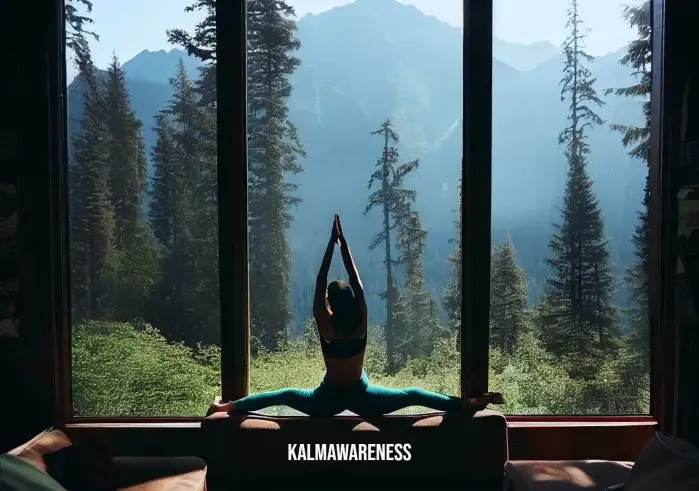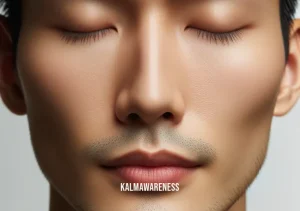Understanding the Calm: How “Mindful People” Show Less Activation in the Brain
Mindfulness, as an intrinsic part of our well-being and lifestyle, has garnered immense attention over the years. This practice, deeply rooted in ancient traditions, has become a beacon of awareness in our modern-day life. At its core, mindfulness emphasizes being present in the moment, observing our thoughts and feelings without judgment, and developing an acute sense of awareness. But what’s even more fascinating is the scientific aspect of it all. When we talk about “mindful people”, studies have shown that they manifest unique patterns in their brain activity. Specifically, “mindful people” show less activation in certain areas of their brain compared to others. But what does this really mean, and how does it impact our overall well-being?
The Science Behind Mindfulness and Brain Activation
The human brain, a complex organ, plays a pivotal role in how we perceive and interact with the world. But with the practice of mindfulness, particularly through techniques like meditation and breathing exercises, this interaction undergoes a subtle transformation. The term “involves attaining a peaceful state of mind in which thoughts are not occupied by worry” might seem intricate, but it encapsulates the essence of mindfulness.
You might wonder, can this be achieved in any posture or setting? Well, some might argue that the optimal state for mindfulness can be achieved while sitting, but others believe it’s possible even when you meditate lying down. This highlights the versatility and adaptability of mindfulness practices.
The Journey of Mindfulness in Various Lifestyles
Mindfulness isn’t merely limited to a seated meditation. It weaves itself into various aspects of our lifestyle. For instance, there’s a beautiful synergy between mindful movement and sleep. This connection underscores the importance of being present, even in the most mundane activities. Such awareness extends to other facets of life too, like the way we perceive touch or our body. It’s intriguing to delve into topics that address how we interact with and “touch that body part”, bringing mindfulness to the fore.
On the other hand, young individuals, especially teenagers walking the path of self-discovery, can immensely benefit from mindfulness. At an age where external influences are abundant, grounding oneself through mindfulness can be transformative.
Diverse Approaches to Mindfulness
Mindfulness, though rooted in tradition, has seen a plethora of approaches in contemporary times. Some people find solace in practices like Rouse Yoga or mindful hypnobirthing, which offer a unique blend of traditional and modern techniques.
Moreover, with the plethora of information available today, sometimes all one seeks is simplicity. For those embarking on this journey, resources like “Meditation Made Simple” or guidance from experts such as Jack Kornfield with his “Meditation for Beginners” can be immensely valuable.
The Promise of Continual Growth
The realm of mindfulness is vast, promising continuous growth and exploration. As we delve deeper into this practice, we uncover layers of understanding and experience. Whether it’s deciphering the “judgement of the wise”, or diving into the element of some meditation exercises, the journey promises a deeper connection with oneself and the world around.
What’s more, embracing mindfulness isn’t just about personal growth. It’s also about extending this practice to our environment, understanding the essence of sustainable self-care, and ensuring our well-being remains holistic.
In essence, mindfulness, with its myriad benefits, offers a unique perspective on life, encouraging us to be present, aware, and deeply connected. As we journey through its diverse avenues, we learn, grow, and evolve, ensuring a fulfilling life experience.
Continue reading as we dive deeper into the intricate relationship between mindfulness and brain activity, understanding how “mindful people” show less activation in specific areas of the brain, and the profound impact it has on our lives.

Brain Activation and Mindfulness: Unveiling the Neural Connections
The scientific community has long been fascinated with the workings of the human brain. Recent research has started highlighting how those who engage in mindfulness practices, termed as “mindful people,” show distinctive patterns in their brain activities. One of the most riveting discoveries is that “mindful people” show less activation in specific regions of the brain when compared to their counterparts. But which areas are these, and what implications do they carry for our overall well-being and lifestyle?
The Neural Pathways of Mindfulness
Before diving into the specific areas, it’s essential to grasp the broader picture. The brain, an intricate web of neural pathways, responds differently to various stimuli. By practicing mindfulness, we cultivate an environment that trains the mind to be stronger than feelings. This can be likened to strengthening a muscle – the more it’s exercised, the more robust it becomes. Similarly, engaging in consistent mindfulness practices helps fine-tune specific neural pathways.
The Regions of Resonance
Amygdala: Often termed as the emotion center of the brain, it plays a crucial role in fear, emotions, and pleasure. Reduced activation here indicates a better ability to regulate emotions.
Prefrontal Cortex: This area is responsible for executive functions such as decision-making, planning, and rational thinking. Mindful people often show more balanced activity in this region, implying enhanced cognitive control.
Hippocampus: Associated with memory and learning, a less hyperactive hippocampus in mindful individuals signifies optimal memory functions and reduced stress levels.
Insula: It plays a role in self-awareness and empathy. Balanced activation here implies improved interoceptive awareness and compassion.
Default Mode Network (DMN): This network is active when the mind is at rest and not focused on the outside world. Reduced activity in the DMN for mindful individuals indicates less mind-wandering and rumination.
Comparative Analysis: Activation Levels in Brain Regions
| Brain Region | General Population Activation | Mindful People Activation | Implications |
|---|---|---|---|
| Amygdala | High | Reduced | Better emotional regulation |
| Prefrontal Cortex | Variable | Balanced | Enhanced cognitive control |
| Hippocampus | Variable | Reduced | Optimal memory and reduced stress |
| Insula | High | Balanced | Improved empathy and self-awareness |
| Default Mode Network | High | Reduced | Reduced mind-wandering and rumination |
Delving deeper, it’s not just about reduced activation but also about balance. For instance, embracing techniques like mirror gazing for its spiritual benefits or engaging in gratitude meditation before sleep can aid in stabilizing these neural connections. It’s intriguing how even the way we spell and understand the concept of stabilize is interlinked with this balance.
Future Horizons: What’s Ahead?
While we’ve begun to scratch the surface of how “mindful people” show less activation in specific brain regions, the landscape is vast and continually evolving. The next chapter promises to unveil how we can harness this knowledge in practical ways, integrating mindfulness seamlessly into our daily lives. Whether it’s through keeping specific concepts in mind or realizing that with every new day, there’s a unique blessing, the journey of discovery is boundless.
Excited about what’s next? Continue reading as we explore actionable steps and practices that can lead us to a more mindful existence, and how these neural patterns influence our daily experiences and choices.

Discovering Hope: The Inspirational Tale of “Mindful People” and Their Neural Tranquility
The journey of understanding how “mindful people” show less activation in certain brain regions has been both enlightening and transformative. But beyond the science and research, there lie personal tales of hope, resilience, and inspiration. These are stories of individuals who, by embracing mindfulness, have not only transformed their neural pathways but have also discovered a renewed zest for life.
Stories that Resonate
One such inspirational tale is that of Maya, a young professional plagued by stress and anxiety. She felt constantly overwhelmed by the demands of modern life. However, upon delving into the deeper meanings and practices of mindfulness, she began to experience a profound change. Not only did she show reduced activation in stress-related brain regions, but she also cultivated a sense of tranquility that permeated her daily life.
“In the noisy chaos of life, there’s a silent sanctuary within all of us. Mindfulness helped me unlock mine.“ – Maya
Then there’s Alex, a retired veteran battling the scars of the past. For him, mindfulness, particularly practices like deep exercises that enabled him to connect profoundly, brought solace. He realized that it wasn’t about escaping his thoughts but befriending them.
“Every thought is a universe, and in its vastness, I found peace, not turmoil.” – Alex
Another noteworthy journey is of Nina, a mother who discovered the joys of mindful hypnobirthing. For her, understanding that “mindful people” show less activation in certain brain areas meant a calmer and more empowering childbirth experience.
“Mindfulness isn’t just a practice; it’s a rebirth. Through it, I not only gave birth to my child but also rediscovered myself.” – Nina
The Broader Implications
These tales are more than just anecdotes. They’re testaments to the transformative power of mindfulness. As evident from the wisdom of the ages, such transformation isn’t new, but it’s only now that we’re understanding its neural basis.
Furthermore, these stories give hope. They show that whether it’s a teenager striving for balance or an elder seeking tranquility, mindfulness is a beacon. It’s not about age, background, or circumstances, but about the willingness to journey inward.
The Path Forward
Beyond hope and inspiration, understanding that “mindful people” show less activation in certain brain areas provides a roadmap for personal growth. It sheds light on the neural pathways of peace and equanimity, illuminating how, through consistent practice, we too can embark on a similar journey.
In the realm of mindfulness, as in life, the journey matters as much as the destination. As we move ahead, the next chapter promises to delve into actionable insights and tools. Whether you’re just beginning or have been on this path for years, there’s always more to explore, learn, and embody.
Curious about the practices, rituals, and habits that can guide you to a state of neural tranquility? Continue reading as we unveil the secrets of mindful living, grounded in both ancient wisdom and contemporary science.
@
Neural Tranquility Demystified: Unpacking the Science Behind Mindful Minds
As we journey further into understanding how “mindful people” show less activation in certain brain regions, it becomes imperative to break down this intricate web. The human brain, with its myriad pathways and regions, can appear daunting. However, when we start unpacking it piece by piece, a clear picture emerges, revealing the profound influence of mindfulness on our neural networks.
The Cornerstones of Neural Tranquility
Stress Response Regulation: A key aspect of why “mindful people” show reduced activation is their ability to regulate stress. It’s not that they don’t experience stress, but rather, they manage it more effectively. Techniques like meditation, especially for beginners, can be instrumental in cultivating this.
Cognitive Balance: Mindful individuals exhibit a balanced neural response, especially in regions related to cognition. This balance enables better decision-making, improved focus, and enhanced clarity.
Emotional Resilience: With reduced activation in emotional centers, these individuals bounce back from emotional setbacks quicker. They don’t suppress emotions; they navigate them with awareness.
Key Brain Regions and Their Role
Amygdala:
- Role: Processes emotions, especially fear and pleasure.
- Mindful Influence: Reduced hyperactivity leads to more controlled emotional responses.
Prefrontal Cortex:
- Role: Handles decision-making, planning, and rational thinking.
- Mindful Influence: Balanced activation promotes rationality over impulsiveness.
Hippocampus:
- Role: Central to memory formation and learning.
- Mindful Influence: Optimal functioning and less susceptibility to stress-related damage.
Insula:
- Role: Manages self-awareness and empathy.
- Mindful Influence: Enhanced awareness of both self and others.
Default Mode Network:
- Role: Active during introspection and mind-wandering.
- Mindful Influence: Reduced activity implies more present-moment awareness and less rumination.
Harnessing the Power of Mindfulness
While the above insights are informative, it’s essential to understand how we can harness this knowledge. Here’s a simple guide:
Start with Basics: Begin with short, daily practices. Even a 5-minute simple meditation routine can lay a strong foundation.
Incorporate Movement: Combine mindfulness with movement. Practices like Rouse Yoga offer a blend of physical and mental well-being.
Daily Introspection: Dedicate a few moments each day for introspection. This can be enhanced by mirror gazing, understanding its spiritual benefits, and reflecting on oneself.
Stay Informed: Continually update yourself. Whether it’s understanding nuances like how to spell stabilize or deepening your practice, always be on a learning curve.
The Journey Continues
With these insights, the mosaic of how “mindful people” show less activation in the brain becomes clearer. But our exploration doesn’t stop here. The final chapter promises a synthesis of all we’ve learned and actionable steps for integrating this wisdom into our daily lives.
Anticipating the culmination of our journey? In the next chapter, we’ll weave together the threads of understanding, providing a roadmap for anyone eager to embrace the peace and balance of a mindful life.
@
Journey’s End: Reflecting on the Tranquil Brainwaves of the Mindful
As we reach the conclusion of our enlightening expedition into the world of “mindful people” and their unique neural signatures, it’s time to take a moment of reflection. This journey, while rooted in scientific intricacies, has also been about stories, insights, and, most importantly, the transformative power of mindfulness. Let’s recapitulate and explore what this means for each one of us, as we navigate the ebbs and flows of life.
Glimpses from Our Journey
We delved into the science, understanding that “mindful people” indeed show less activation in specific brain regions, offering them a neurological advantage in emotional and cognitive regulation.
Inspirational tales, like those of Maya, Alex, and Nina, brought to life the real-world implications of these findings. These narratives reiterated that with mindfulness, transformation isn’t just possible – it’s inevitable.
Breaking it down further, we got a granular view, examining the individual brain regions influenced by mindfulness, each playing a pivotal role in shaping our experiences and reactions.
Applying the Wisdom
Armed with this knowledge, here are some actionable steps for your mindful journey:
Start Now: Don’t wait for the “right moment.” Incorporate simple practices into your daily routine. Consider trying out sustainable self-care techniques that align with mindfulness.
Engage with a Community: Join groups or forums that share insights, experiences, and resources on mindfulness. Interaction deepens understanding.
Stay Curious: The realm of mindfulness is vast. There’s always something more to discover, be it through exploring the element of certain meditation exercises or diving deeper into specific techniques.
Integrate, Don’t Segregate: Don’t treat mindfulness as a separate “task.” Integrate it into your day, whether it’s being present during a walk, or mindfully listening to a loved one.
Your Next Steps
The exploration doesn’t end here. We invite you to delve deeper, to engage with the myriad other topics we cover, each designed to enrich, inform, and inspire. Maybe start by exploring how different movements, like walking, impact teenagers or understand the profound effects of gratitude meditation before sleep.
A Heartfelt Thank You
We’re incredibly grateful for the time you’ve invested in traversing this journey with us. Every word, every insight was crafted with you in mind. As we wrap up this chapter, rest assured, there’s much more to come. With every edition, with every piece, we’re committed to bringing you content that resonates, informs, and elevates.
Until next time, stay curious, stay mindful, and remember, the journey inward is the most profound voyage you’ll ever undertake. We’ll be right here, guiding you along the way.




